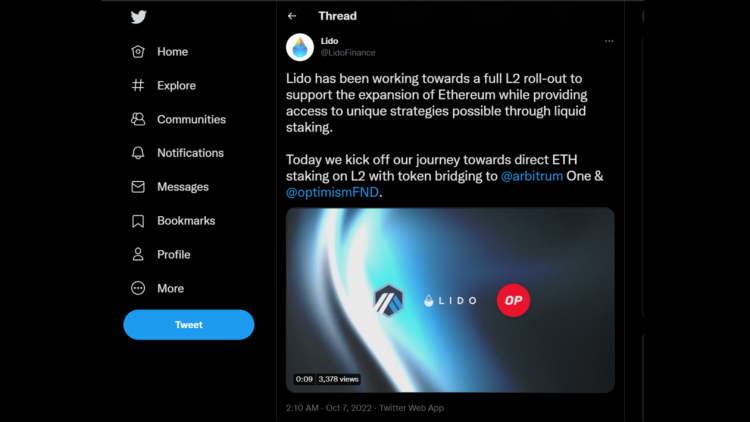Ethereum liquid staking protocol Lido has announced the expansion of its staking token stETH to Ethereum layer 2 networks Arbitrum Bridge and Optimism, according to a Friday tweet.
See related article: Vitalik Buterin: Layer 2 the future of Ethereum scaling
Fast facts
- This expansion comes with the launch of a token called wstETH — a “wrapped” version of the staking coin stETH that provides a stable amount of tokens for users to circulate in the DeFi protocol on the layer 2 networks.
- The expansion will allow traders to stake tokens directly on the layer 2 networks, Lido said in the tweet.
- “While stETH is confined to the Ethereum network, Lido’s expansion means users will be able to stake and interact with their tokens with significantly lower transaction fees,” said audit tech lead Jasper Lee of blockchain firm Sooho.io.
- However, bridge systems like Arbitrum and Optimism are more vulnerable to hacks, Lee added. “It could fall victim to a hack similar to the one we saw with the Nomad bridge.”
- Lido is a protocol that allows traders to stake without losing liquidity when staking. Once users deposit ETH into the platform for staking (a mechanism that locks crypto assets for a period to earn more crypto), they will receive the token stETH at a certain rate, and the stETH can be circulated in other DeFi transactions for earning.
- Optimism and Arbitrum Bridge are so-called layer 2 blockchains that work on top of the Ethereum blockchain network (the “layer 1”). It bundles users’ transactions to add them to the Ethereum mainnet for reducing transaction fees and alleviating network congestion.
See related article: 300 bad actors said to perpetrate Nomad’s US$200 mln exploit
Source by forkast.news






























